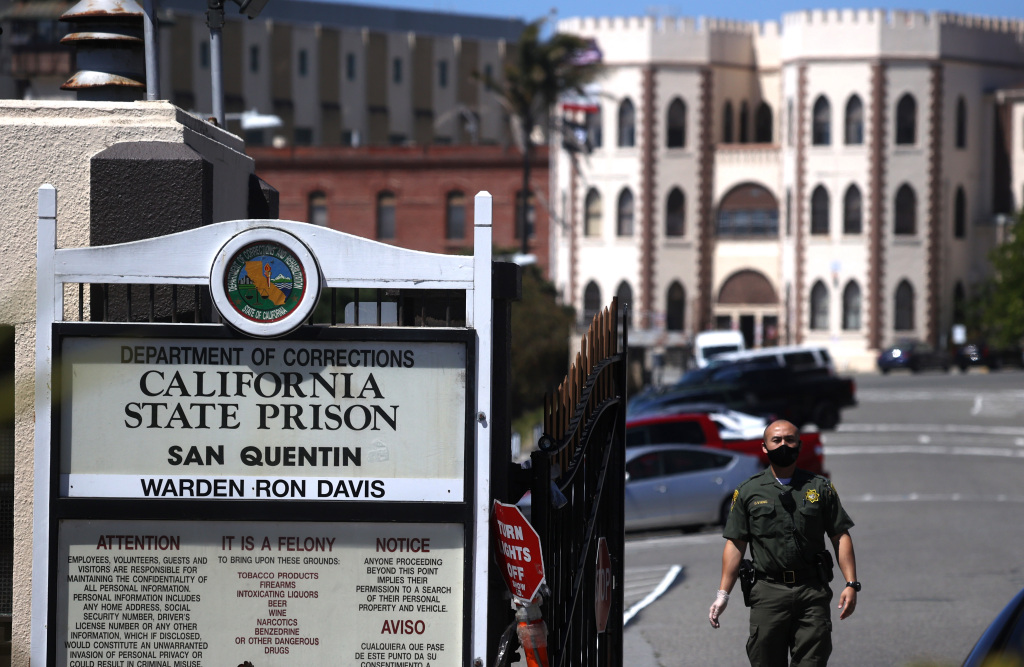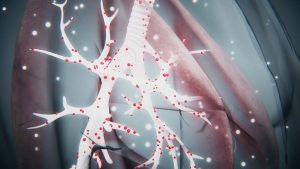Gov. Gavin Newsom is set to green-light the release of upward of 8,000 state prison inmates, primarily low-level offenders and older inmates, in response to surging COVID-19 infections in California prisons, highlighted by a dramatic virus outbreak at San Quentin State Prison, according to state prison officials.
The releases, which are set to occur on a “rolling basis” between now and the end of August, occur over the next several weeks, were decided after relentless pressure was put on Newsom and the California Department of Corrections and Rehabilitation to take drastic action to stem the spread of the virus in the state prison system and especially San Quentin, which accounts for 1,331 of the state’s 2,318 active COVID-19 prison cases.
“The decision today by Gov. Newsom to ramp up safe prison releases is a credit to the advocacy of people and organizations throughout the state who have demanded clear action to protect public health and safety,” Jay Jordan, executive director of Californians for Safety and Justice, said in a statement. “It’s ironic that California has a moratorium on the death penalty, yet people are being killed in prisons by way of COVID.”
Jordan, who was once incarcerated himself, added that “there is a moral imperative for bolder action to reduce overcrowding in our prisons,” and that “California must release people who are unnecessarily incarcerated and transform our safety priorities.”
The state’s current prison population is about 113,000, and Newsom has been the recipient of calls to halve that number to ensure that inmate infections are not an inevitability. For now, the 8,000 inmates eligible for release in the next two months are deemed as not posing a high risk for violence and fall into one of the following categories:
- 4,800 inmates with 180 days or less left on their sentences for a nonviolent, non-sex crime
- Nonviolent inmates over the age of 30 with a year or less left on their sentence, and who are being held in a prison deemed to be housing “large populations of high-risk patients,” including San Quentin
- 2,100 inmates benefiting from a one-time 12-week custody credit for good behavior, excluding those on life-without-parole or death sentences
- “High risk” inmates with serious health ailments that make them especially vulnerable to contracting or dying from COVID-19, including inmates over the age of 65
San Quentin, which houses the state’s death row, has recorded seven deaths to date, and about 70 inmates have been hospitalized outside the facility. Dr. Matt Willis, Marin County’s public health officer, said Thursday the prison is averaging about 10 new hospitalizations a day, and that death row inmates are particularly vulnerable to the disease because of their older age and the configuration of the prison.
Willis said the state Office of Emergency Services is constructing a 200-bed field hospital on the prison grounds to offset the impact on local hospitals, a triage response that also involves the Army National Guard. But he did not hold back in criticizing how the situation grew critical so rapidly.
“In my world of public health, what has happened here is a disaster,” Willis said. “We’re calling for rethinking the whole prison organization. The stage was set. With this many men locked so close with the inability to social distance, it’s set up for another outbreak.”
Prison and jail outbreaks have worsened as the state grapples with the pandemic’s worst fallout yet. California topped 300,000 cases Thursday and hit all-time records for both average cases and average daily deaths, while hospitalizations have climbed upwards for nearly two weeks to 7,821 patients.
Alameda County Chief Public Defender Brendon Woods, who has been outspoken in calling for the state to decrease the prison populations, spearheaded a petition calling for the release of low-risk inmates that gathered more than 10,000 signatures in a week.
“There are over 60,000 who by CDCR’s own standards are low risk, release them all today,” he said at a Thursday news conference in front of San Quentin that was attended by several state lawmakers. “You can’t do it three months from now. You have to do it now.”
“There are over 60,000 who by CDCR’s own standards are low risk release them all today. You can’t do it three months from now, you have to do it now” @BrendonWoodsPD #StopSanQuentinOutbreak #LetThemGo pic.twitter.com/puyAkPh0Hd
— Ella Baker Center (@ellabakercenter) July 9, 2020
Most of San Quentin’s COVID-19 infections surfaced over the past two weeks after 121 inmates were transferred there in late May from the California Institution for Men in Chino. That decision has been widely criticized, and led to the demotion of the state prison’s top medical officer and the installation of J. Clark Kelso, a court-appointed federal receiver.
Assemblyman Marc Levine, D-San Rafael, said the transfer was the “worst prison health screwup in state history,” and has already called for Kelso’s ouster as well.
“It has been incredibly frustrating,” Newsom said at a news conference Thursday. “That decision created the chain of events that we are now addressing and dealing with. I’m not here to sugarcoat that, I’m not here to scapegoat that.”
James King, a former San Quentin inmate and a state campaigner for the Oakland-based Ella Baker Center for Human Rights, has called for Newsom to tour the prison to see the dire conditions himself. At the news conference in front of the prison Thursday, he read an inmate’s letter describing the inmate being bedridden, experiencing headaches and vomiting, and that bathing is infrequent. The letter described how sick inmates can be heard frequently shrieking in pain.
Overall, since the formal declaration of the pandemic in early March, the state’s prisons have recorded 5,810 total coronavirus cases — including at least 31 deaths — across the prison system as of Friday. San Quentin has recorded a whopping 1,660 coronavirus patients, with most of the cases surfacing in the past couple of weeks. The next-biggest total is in Riverside County’s Chuckawalla Valley State Prison, with 1,032 total infected inmates, 241 of which remain in custody.
Staff writer Nate Gartrell and the Marin Independent Journal contributed to this report.
Check back later for updates to this story.



















